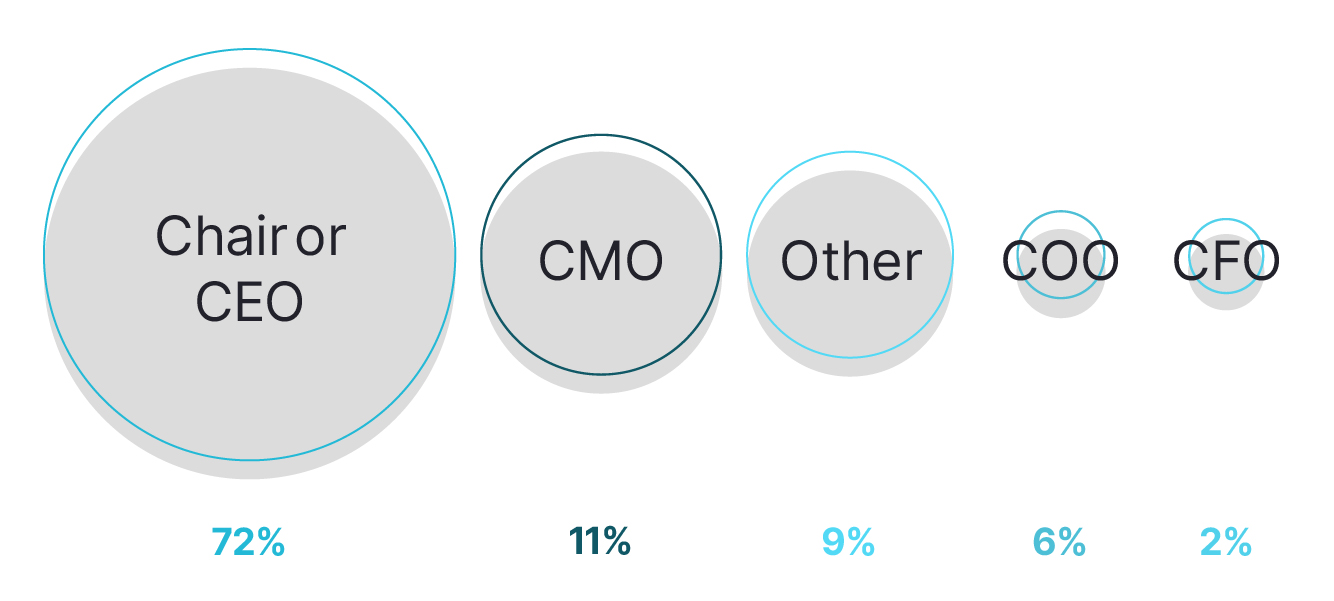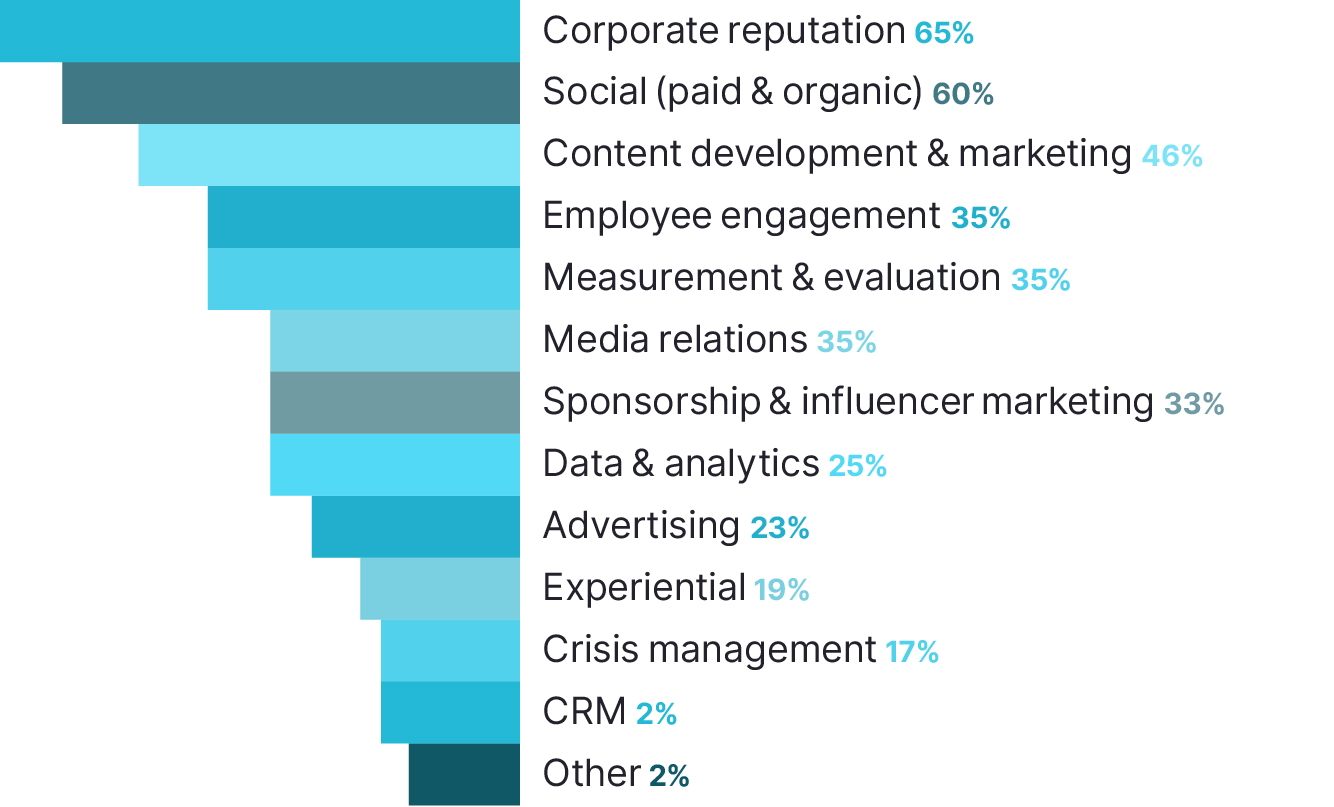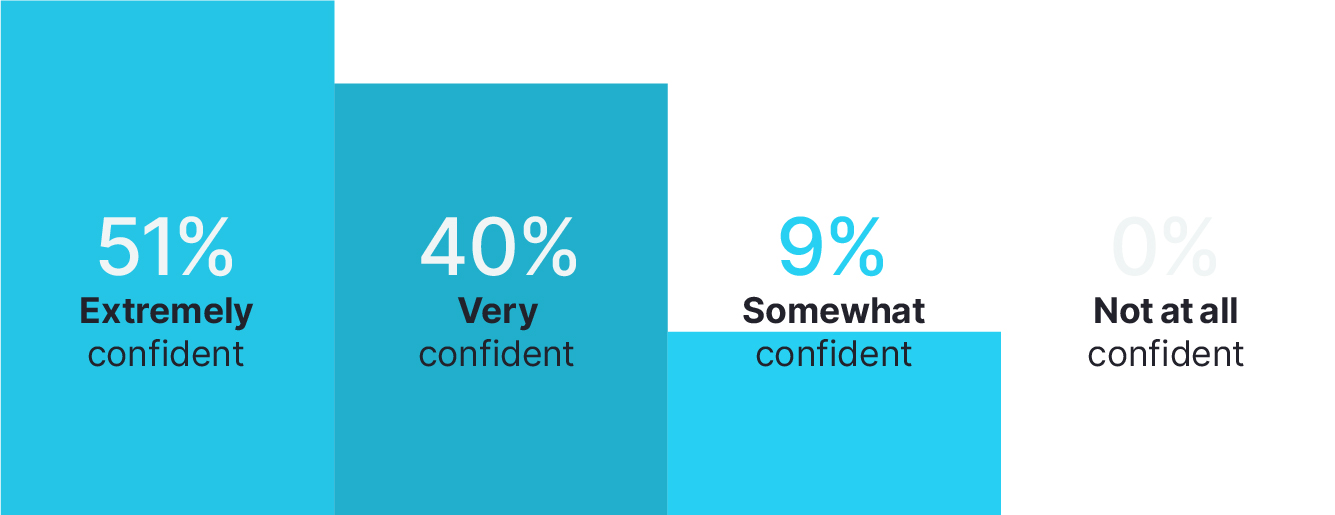
 Podcasts
PodcastsCatch the latest PR news & updates with PRovoke Media's PR Podcasts. Lifting the lid on key industry stories & trends, join our listeners of PR podcasts today.
 Videos
VideosLatest video interviews and campaigns from PRovoke Media, previously known as the Holmes Report.
Long-form journalism that analyzes the issues, challenges and opportunities facing the business and practice of PR.
 Profiles & Interviews
Profiles & InterviewsExplore PR profiles and interviews with leaders from the marketing and PR worlds.
 Crisis Review
Crisis ReviewPR Crisis & Business Crisis review. PRovoke Media's annual analysis of the top reputation crises to rock the corporate sector. Read on here.
 Coronavirus
CoronavirusPRovoke Media's coverage of the Covid-19 crisis, focusing on corporate communication, public affairs & PR industry fallout.
 Trend Forecasts
Trend ForecastsPRovoke Media's PR Trends round up. PRovoke Media's annual forecast of PR trends and news that will impact the PR world in the year ahead...
 Social & Digital
Social & DigitalDedicated to exploring the new frontiers of PR as it dives deeper into social media, content and analytics.
 Technology
TechnologyOur coverage of key technology PR trends and challenges from around the world of digital communications.
 Consumer
ConsumerFrom brand marketing to conscious consumerism, coverage of key marketing and PR trends worldwide.
 Employee Engagement
Employee EngagementPRovoke Media's coverage, analysis and news around the rapidly-shifting area of employee engagement and internal communications.
 Sports Marketing
Sports Marketing Sports PR news, diversity & inclusion trends, views and analysis from PRovoke Media. Subscribe today for the very latest in the world of sports communications.
 Global PR Agency Rankings
Global PR Agency RankingsPRovoke Media's definitive global benchmark of global PR agency size and growth.
Enter PRovoke Media's 2024 Global 250 Agency Ranking and/or our Agencies of the Year competitions now.
 Agencies of the Year
Agencies of the YearPRovoke Media's annual selections for PR Agencies of the Year, across all of the world's major markets.
 Innovator 25
Innovator 25PRovoke Media profiles marcomms innovators from across North America, EMEA and Asia-Pac.
 Creativity in PR
Creativity in PRIn-depth annual research into the PR industry's efforts to raise creative standards.
 Asia-Pacific Communication Index
Asia-Pacific Communication IndexAPACD/Ruder Finn annual study of Asia-Pacific in-house communications professionals.
 SABRE Awards
SABRE AwardsThe world's biggest PR awards programme, dedicated to benchmarking the best PR work from across the globe.
 PRovokeSummit Global
PRovokeSummit GlobalThe biggest PR conference of the year, a high-level forum designed to address the critical issues that matter most.
 PRovoke Media Regional Series
PRovoke Media Regional SeriesA global network of conferences that explore the innovation and disruption that is redefining public relations.
 Agencies of the Year
Agencies of the YearUnrivalled insight into the world's best PR agencies, across specialist and geographic categories.
 Roundtables
RoundtablesOur Roundtables bring together in-house comms leaders with PR firms to examine the future of communications.
 Agency Playbook
Agency PlaybookThe PR industry’s most comprehensive listing of firms from every region and specialty
.jpg) All Jobs
All JobsFind the latest global PR and communications jobs from PRovoke Media. From internships to account executives or directors. See all our PR jobs here.
PRovoke Media's editorial series published in collaboration with partners.

 The number of CMOs and CCOs reporting into the chief executive or chair of their organisation is high and stable this year: 72%, compared to 73% last year and 74% in 2019, which was a big leap up from 64% in 2018. Oversight by the chief marketing officer rose for the first time in a couple of years: from 14% in 2018, to 8% in 2019, to just under 7% in 2020, this year it’s at 11%. A rising number also report into the chief operations officer: nearly 6%, compared to 4% last year, while 9% cohort report into varied functions (compared to 15% last year) including titles such as heads of corporate, global or public affairs and chief impact officer. Just under 2% of our influencers this year report into the chief finance officer, compared to none last year and 5% in 2019.
The number of CMOs and CCOs reporting into the chief executive or chair of their organisation is high and stable this year: 72%, compared to 73% last year and 74% in 2019, which was a big leap up from 64% in 2018. Oversight by the chief marketing officer rose for the first time in a couple of years: from 14% in 2018, to 8% in 2019, to just under 7% in 2020, this year it’s at 11%. A rising number also report into the chief operations officer: nearly 6%, compared to 4% last year, while 9% cohort report into varied functions (compared to 15% last year) including titles such as heads of corporate, global or public affairs and chief impact officer. Just under 2% of our influencers this year report into the chief finance officer, compared to none last year and 5% in 2019. Our Influence 100 now control PR spend of more than $4.7 billion, almost back up to 2019 levels after last year’s unsurprising dip to $4.2 billion, although still much less than the $6.5bn recorded when this survey launched in 2012.
Our Influence 100 now control PR spend of more than $4.7 billion, almost back up to 2019 levels after last year’s unsurprising dip to $4.2 billion, although still much less than the $6.5bn recorded when this survey launched in 2012. PR budgets include a wider range of activities than ever. The areas that have swallowed up most spend this year and are anticipated to be major areas of spend next year include corporate reputation (65%, still at the top, although down on the 75% who said it was a priority last year) and social media, where 60% said they expected paid and organic social to be a significant area of spend, although this is down from 91% who said much of their focus would be on social last year as priorities in how to reach and engage audiences in lockdown shifted.
PR budgets include a wider range of activities than ever. The areas that have swallowed up most spend this year and are anticipated to be major areas of spend next year include corporate reputation (65%, still at the top, although down on the 75% who said it was a priority last year) and social media, where 60% said they expected paid and organic social to be a significant area of spend, although this is down from 91% who said much of their focus would be on social last year as priorities in how to reach and engage audiences in lockdown shifted. Confidence among our CMOs and CCOs is soaring after the extreme uncertainty of last year; 51% said they were extremely confident about the resilience of the sector they operate in, compared to 39% last year, and another 40% said they were very confident, compared to 45% last year. Only 9% sounded a note of caution by saying they were somewhat confident, and none of our respondents said they lacked confidence in the future of their sector.
Confidence among our CMOs and CCOs is soaring after the extreme uncertainty of last year; 51% said they were extremely confident about the resilience of the sector they operate in, compared to 39% last year, and another 40% said they were very confident, compared to 45% last year. Only 9% sounded a note of caution by saying they were somewhat confident, and none of our respondents said they lacked confidence in the future of their sector.  The number who manage teams of more than 100 people rose again this year to 52% – up from 38% in 2018, 41% in 2019 and 49% in 2020. The number managing teams of 50-100 was up to 23% from 13% in 2020, while 13% manage a team of 21-50, compared to 16% last year, and only 12% have a small in-house team of 20 or less, compared to 22% last year.
The number who manage teams of more than 100 people rose again this year to 52% – up from 38% in 2018, 41% in 2019 and 49% in 2020. The number managing teams of 50-100 was up to 23% from 13% in 2020, while 13% manage a team of 21-50, compared to 16% last year, and only 12% have a small in-house team of 20 or less, compared to 22% last year.
 The Influence of our 100 this year again ranges much further than public relations, in terms of being primary decision makers beyond PR agencies, where 98% are again responsible for hiring, the same as last year. This year, 69% of respondents were the primary decision-maker for digital/social agencies (up from 64% last year and 53% in 2019) and 41% said the same of advertising agencies, up significantly from 32% last year. Other specialist agencies managed by our cohort included content, data and analytics, research, measurement, public affairs, ESG and CSR, financial communications, events, and training.
The Influence of our 100 this year again ranges much further than public relations, in terms of being primary decision makers beyond PR agencies, where 98% are again responsible for hiring, the same as last year. This year, 69% of respondents were the primary decision-maker for digital/social agencies (up from 64% last year and 53% in 2019) and 41% said the same of advertising agencies, up significantly from 32% last year. Other specialist agencies managed by our cohort included content, data and analytics, research, measurement, public affairs, ESG and CSR, financial communications, events, and training.  Agency spend appears to be on an upward trajectory, with 30% spending more than $20m on their PR agency partners compared to 28.5% last year and 17% in 2019. Around the same proportion – 32% – spent between $2m and $10m, up from 28.5 last year, while 16% had a PR budget of £10m-$20m, compared to 14% in 2020. At the lower end, the number of respondents spending less than $1m was up again to pre-2020 levels at 16%, compared to 5% last year, and the number spending between $1-$2m was 7%, compared to 24% last year.
Agency spend appears to be on an upward trajectory, with 30% spending more than $20m on their PR agency partners compared to 28.5% last year and 17% in 2019. Around the same proportion – 32% – spent between $2m and $10m, up from 28.5 last year, while 16% had a PR budget of £10m-$20m, compared to 14% in 2020. At the lower end, the number of respondents spending less than $1m was up again to pre-2020 levels at 16%, compared to 5% last year, and the number spending between $1-$2m was 7%, compared to 24% last year. Just 4% of our CMOs and CCOs say they have one global PR agency of record, up from 2% last year but still down on 6% in 2019. The number who said they have a global AOR, but also work with other firms was 33%, down from 39% last year. There was also a drop in the number in the proportion of respondents who use regional agencies of record, from 14% to 8%, similar to 2019 levels, but a hike in the number of in-house leaders who have separate agencies in each market, from 11% to 20%. The trend for selecting firms on a project basis is steady, with a third again saying this was their preferred way of working with agencies (up from 23% in 2019). And compared to last year, when every one of our influencers said they used PR agencies, this year 2% said they did not (although this is still down on 6% in 2019).
Just 4% of our CMOs and CCOs say they have one global PR agency of record, up from 2% last year but still down on 6% in 2019. The number who said they have a global AOR, but also work with other firms was 33%, down from 39% last year. There was also a drop in the number in the proportion of respondents who use regional agencies of record, from 14% to 8%, similar to 2019 levels, but a hike in the number of in-house leaders who have separate agencies in each market, from 11% to 20%. The trend for selecting firms on a project basis is steady, with a third again saying this was their preferred way of working with agencies (up from 23% in 2019). And compared to last year, when every one of our influencers said they used PR agencies, this year 2% said they did not (although this is still down on 6% in 2019).
 The number of CCOs and CMOs preferring to hire agencies via a traditional RFP pitch process was significantly up this year, from 32% in 2020 to 45% (compared to 37.5% in 2019), while the number preferring to run an invitation-only process was down from 52% to 39%. The number of respondents who prefer to hire an agency they have previously worked with was down slightly from 9% to 6% (compared to 3% in 2019), and those using referral networks was back up to pre-pandemic levels, at 10%, compared to 7% last year.
The number of CCOs and CMOs preferring to hire agencies via a traditional RFP pitch process was significantly up this year, from 32% in 2020 to 45% (compared to 37.5% in 2019), while the number preferring to run an invitation-only process was down from 52% to 39%. The number of respondents who prefer to hire an agency they have previously worked with was down slightly from 9% to 6% (compared to 3% in 2019), and those using referral networks was back up to pre-pandemic levels, at 10%, compared to 7% last year. For the first time this year, we asked our leaders which agency services they would be looking at bringing in-house. While 30% said none, the same number said they would be making an effort to bring media relations in-house, 30% said they would be looking at bringing social media management in-house, and 28% said they were considering bringing content production in house – all core and growing income streams for PR agencies. Nearly a quarter of our respondents said they would like to bring data and analytics in-house, while both measurement and evaluation and creative idea generation were being looked at as possible functions that could be brought in house by 18% of the Influence 100. Influencer marketing was a less attractive option, with only 10% saying they would be bringing it in-house. Other options included earned media – although one respondent commented: “We’re actually farming out more than we historically have.”
For the first time this year, we asked our leaders which agency services they would be looking at bringing in-house. While 30% said none, the same number said they would be making an effort to bring media relations in-house, 30% said they would be looking at bringing social media management in-house, and 28% said they were considering bringing content production in house – all core and growing income streams for PR agencies. Nearly a quarter of our respondents said they would like to bring data and analytics in-house, while both measurement and evaluation and creative idea generation were being looked at as possible functions that could be brought in house by 18% of the Influence 100. Influencer marketing was a less attractive option, with only 10% saying they would be bringing it in-house. Other options included earned media – although one respondent commented: “We’re actually farming out more than we historically have.” This is another new question for 2020, and a gratifying reflection on how closely many in-house teams and PR agencies have worked together to get through the pandemic, and how hard agencies have worked for their clients in extraordinary times. Less than 2% of respondents said they were not at all satisfied with their agency partners, while 53% said they were reasonably satisfied and 45% said they were extremely satisfied.
This is another new question for 2020, and a gratifying reflection on how closely many in-house teams and PR agencies have worked together to get through the pandemic, and how hard agencies have worked for their clients in extraordinary times. Less than 2% of respondents said they were not at all satisfied with their agency partners, while 53% said they were reasonably satisfied and 45% said they were extremely satisfied.
Not surprisingly, there has been a shift in the perceived value that agencies bring to their clients this year as we move beyond the crisis phase of the pandemic, with a small drop in the number of CCOs and CMOs who said they most valued agencies’ strategic counsel, from 26% last year to 20% this year, compared to only 13% in 2019. There was a notable rise, from 19% to 25%, in the number of those saying creative thinking and new ideas had been the greatest benefit of working with an agency over the past year – although still nowhere near the 36% who rated agencies’ creativity most highly in 2019. And there’s again an even stronger focus on in-house leaders valuing agencies’ tactical and execution support, up from 43% in 2019, to 49% last year, and 51% this year.


We again asked two questions we introduced last year to gauge how relationships and expectations have shifted during the pandemic. Showing how well the industry has adapted to the new remote working environment globally, 80% of our influencers said there had been no change to their relationships with their PR agencies, compared to 64% last year. Slightly less than 10% said their relationships with their PR agencies had suffered because of home working, compared to 11% in 2020, and the same number said relationships had improved (although this was down from 18% last year).
In terms of expectations, as everyone settled into the “new normal”, a much larger proportion this year said there had been no change to what they expected from their PR agencies _ up from 36% to 47%. A small number – 6%, around the same as last year – said expectations had decreased. A further 35% – down from 40% last year – said expectations had grown slightly and only 12% (compared to 17% in 2020) said their expectations of their agencies had grown “dramatically” throughout the year.





Intelligence and insight from across the PR world.
About PRovoke Media Contact Us Privacy & Cookie PolicyWe feel that the views of the reader are as important as the views of the writer. Please contact us at [email protected]
Signup For Our Newsletter Media Kits/Editorial Calendar Jobs Postings A-Z News Sitemap© Holmes Report LLC 2024